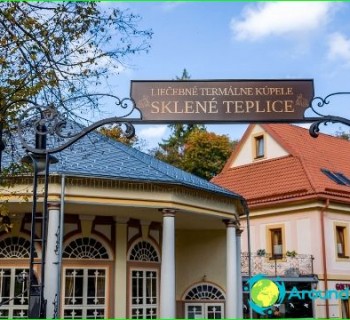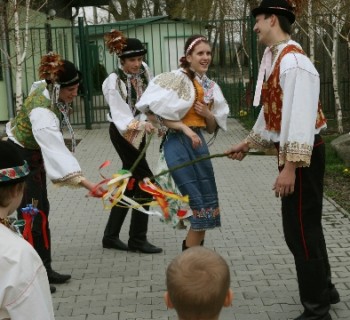Flag of Slovakia

The official flag of the Slovak Republic is a tricolor rectangular cloth, the sides of which are proportional to each other in a 2: 3 ratio. On the field of the flag there are three stripes of equal width: red - at the bottom, blue - in the middle and white - at the top. In the left half of the flag field there is an ancient coat of arms that looks like a white double cross on a triple blue mountain, executed on a red field.
The history of the flag of Slovakia is very ancient. Once these lands belonged to the Kingdom of Hungary. For the first time, a white cross in a scarlet field appeared in the symbolism of the Hungarian ruler Bela IV, who restored the country after the Mongol invasion of the 13th century. The double cross on the shield was the main symbol of King Bela, minted on his coins and other palace paraphernalia. It reminded of the double patriarchal cross brought by Cyril and Methodius from Byzantium in the 9th century..
In the middle of the 19th century, Slovaks made an attempt to free themselves from Hungarian rule. Their flag in the war of liberation was the red and white cloth, which they raised in the vanguard of their troops. The Russian troops came to the aid of the Slovaks, on whose side Austria also came out. Nicholas I considered it his duty to support the fraternal Slavic people. Russian help came in handy, and Hungary was defeated, and a blue stripe was added to the flag of Slovakia in honor of the Russian State.
In 1939, on the territory of modern Slovakia, the First Slovak Republic was created, which approved a simple tricolor as the national flag. At the end of World War II, Slovakia was united with the Czech Republic into a single state, and for some time they had to forget about their own flag. 1990 brought sovereignty and the change of national symbols, along with the Velvet Revolution. So the tricolor returned to the flagpoles of the country, but its appearance changed somewhat. Completely coinciding with the Russian in appearance, the flag of Slovakia required unique, only inherent features. It was then that the country remembered the Hungarian king Bela IV and his shield with a double white cross. Today, this distinctive sign symbolizes the tradition according to which Felvidek, or today's Slovakia, was once part of Hungary. Three azure mountains carrying the cross are Tatra, Fatra and Matra, where Slovaks lived from ancient times. Today, only two of them are actually located on the territory of Slovakia..


